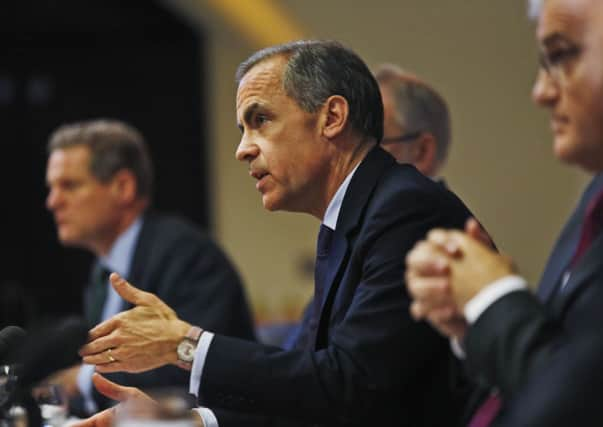Leaders: One-size housing solution will not work


Amid fears that a new “property price bubble” could derail the economic recovery, he has hinted at a new “affordability test”, while politicians have quickly jumped in with proposals to curb the government’s Help to Buy scheme.
From a Scottish perspective, it is very hard to reconcile these latest assessments and proposals with reality. The Scottish residential property market has not experienced a “house price surge”, still less acquired the characteristics of a “house price bubble”. There certainly appears to be a problem in London, where prices have risen by an average 18 per cent in the past year. But this is not the case in Scotland, where prices have risen by 3.5 to 4 per cent. Indeed, across most of the UK, house prices have still to recover to their pre financial crisis peak. Talk of a “bubble” outside London is wide of the mark.
Advertisement
Hide AdAdvertisement
Hide AdSeveral problems arise from the latest pronouncements. The first is a concern that action to restrict mortgage demand UK-wide now might well act to quell the confidence housebuilders need to ensure a rising number of construction starts. The need for housebuilding after a plunge to levels not seen for decades has been well argued by Homes for Scotland for the past three years. What the industry here does not need are measures which may be applicable to the faster parts of London but which have little relevance north of the Border.
A similar concern arises over the future of the Help to Buy scheme. This has helped 17,000 buyers in its first nine months. Of these, 88 per cent were first-time buyers and over three quarters were outside London and the south-east of England. Policymakers must be careful, in seeking to address a problem in London, that they do not impair the workings of this scheme in areas where prices have been rising far more modestly and where loan-to-value ratios are more modest.
There is a further problem: the growing confusion over monetary policy. Last summer, the Bank governor boldly unveiled “forward guidance” on interest rates to help households and businesses better plan their affairs.
That policy has effectively collapsed and we now seem to be back in the era of monthly nods, winks and ambiguous signals. Even though unemployment has fallen below 7 per cent and the monetary policy committee is forecasting 3.4 per cent growth this year, such are the conflicting signals that no-one is now sure when the Bank intends to start raising interest rates. No-one expects Mr Carney to have any more magical powers than his predecessors. But his remarks have clouded rather than clarified the Bank’s position. That cannot be of help, either to business or to home-buyers in what is a diverse housing market with different dynamics across the UK.
Armed police levels need explanation
There was a time not all that long ago when earnest assurances were given that police officers in Scotland would only carry guns in exceptional circumstances involving particularly violent crime and terrorism. Now, according to Police Scotland, officers are regularly carrying handguns while on routine patrol.
No fewer than 440 “specialist firearms officers” have been authorised by Chief Constable Sir Stephen House to carry guns while on duty. Armed response vehicle crews are now dealing with everything from missing persons to road accidents.
This remarkable change has unfolded despite figures showing gun crime in Scotland is at its lowest level since 1980. What is even more remarkable is that this normalisation of armed police on Scotland’s streets has been brought in without discussion in the Scottish Parliament, either on the inherent dangers or on the evidence that justifies such a surreptitious change in policy.
Experience from America reminds us of the dangers of having the police routinely armed. Guns can go off accidentally, or can be lost or stolen, or can in some instances provoke the very gun violence that the carrying of firearms was intended to prevent.
Advertisement
Hide AdAdvertisement
Hide AdOf course the police have a duty to protect the public and require the necessary tools most applicable to undertake this demanding and often dangerous role. But should the carrying of guns be a routine part of policing duties? Such display of weaponry is also said to have a role in reassuring the public. But many members of the public may feel more perturbed than reassured. The chief constable should not be a law unto himself and some accountability here through the Scottish Parliament is surely required.